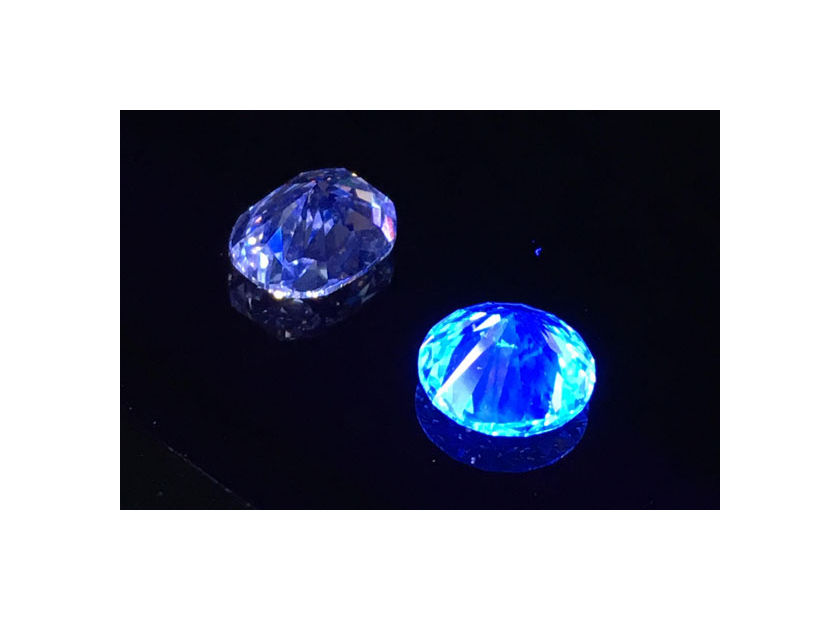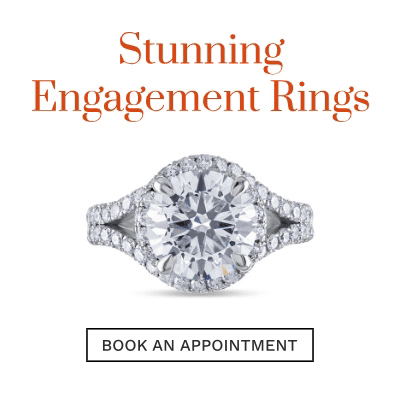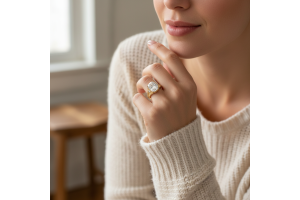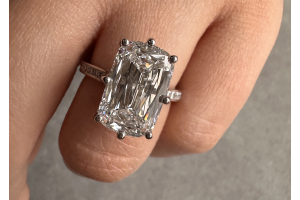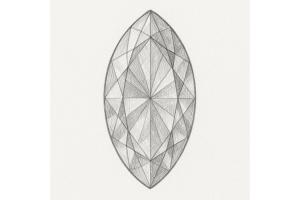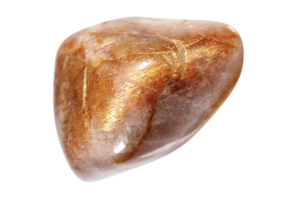GBP
/
GBP
/
Shipping to:
Currency:
Diamond Fluorescence: What You Need to Know Before You Buy
Diamond fluorescence is one of those aspects of diamonds that can either be a deal-maker or deal-breaker, depending on your perspective. While some might see it as a flaw, others view it as an intriguing characteristic that adds a unique touch to their gemstone. Understanding what diamond fluorescence is, how it affects the appearance of a diamond, and whether it should influence your purchasing decision is crucial for any buyer.
What Is Diamond Fluorescence?
Diamond fluorescence refers to the visible light that some diamonds emit when exposed to ultraviolet (UV) rays. The fluorescence is most commonly a blue glow, though other colours such as yellow, green, or even white can sometimes be observed. This phenomenon occurs due to the presence of trace minerals within the diamond's structure, which react to UV light. Not all diamonds exhibit fluorescence, and its strength can vary from faint to very strong.
The Impact of Fluorescence on Diamond Appearance
The effect of fluorescence on a diamond's appearance can be subjective. In certain lighting conditions, particularly in natural daylight, a diamond with strong fluorescence may appear hazy or oily. However, in other cases, it can actually enhance the visual appeal of the diamond, making it appear more brilliant, especially if the diamond has a lower colour grade.
Pros and Cons of Diamond Fluorescence
When considering diamond fluorescence, it's important to weigh both its potential advantages and disadvantages. On the positive side, diamonds with fluorescence can sometimes appear whiter than they actually are, which can be a benefit if you're purchasing a diamond with a lower colour grade. Additionally, diamonds with fluorescence can often be found at a lower price point than those without, offering potential savings.
However, there are also potential drawbacks. In some cases, strong fluorescence can cause a diamond to appear cloudy or less transparent, particularly in diamonds of higher colour grades. This can detract from the diamond's overall beauty and value.
Should You Buy a Diamond with Fluorescence?
The decision to buy a diamond with fluorescence ultimately depends on personal preference and the specific characteristics of the diamond. If you're considering a diamond with fluorescence, it's essential to view it in various lighting conditions to determine if the fluorescence enhances or diminishes its appearance. Additionally, consulting with a trusted jeweller can provide valuable insights into how fluorescence may affect the diamond you're interested in.
FAQs about Diamond Fluorescence
What causes diamond fluorescence?
Diamond fluorescence is caused by the presence of trace elements within the diamond's crystal structure, which react to ultraviolet light.
Does fluorescence affect a diamond's value?
Fluorescence can affect a diamond's value, but this impact is not straightforward. While some diamonds with strong fluorescence may be valued lower due to a perceived negative impact on appearance, others may be considered more desirable if the fluorescence enhances the diamond's visual appeal.
Is diamond fluorescence visible in all lighting conditions?
No, diamond fluorescence is most noticeable under ultraviolet light, such as sunlight. In regular indoor lighting, it is generally not visible.
Can fluorescence make a diamond appear whiter?
Yes, in some cases, fluorescence can make a diamond appear whiter, particularly if the diamond has a lower colour grade.
Should I avoid diamonds with strong fluorescence?
Not necessarily. The effect of strong fluorescence on a diamond's appearance can vary. It's best to view the diamond in person and in different lighting conditions before making a decision.
Is fluorescence more common in certain diamond shapes?
Fluorescence can be found in any diamond shape, but it is more commonly seen in round brilliant cuts due to their popularity.
Can fluorescence be removed from a diamond?
No, fluorescence is a natural characteristic of the diamond and cannot be altered or removed.
Does diamond fluorescence affect its durability?
No, fluorescence does not impact the structural integrity or durability of a diamond.
Why are diamonds with fluorescence often less expensive?
Diamonds with strong fluorescence are sometimes priced lower because of the potential for the fluorescence to negatively impact the diamond's appearance. However, this can also make them a good value if the fluorescence does not detract from the diamond's beauty.
How can I tell if a diamond has fluorescence?
A professional jeweller can assess a diamond's fluorescence using a UV light source. The strength and colour of the fluorescence will be noted on the diamond's grading report.



